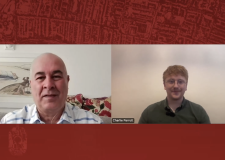Brighton health chief highlights number of homeless cases at hospital
More than 660 patients in Brighton’s busy accident and emergency department last year were homeless.
Some of them were repeat visitors, falling through gaps in the health and social care systems, according to a hospital boss.
These gaps in the system meant that they were more likely to end up in A&E at the Royal Sussex County Hospital than if they were managed differently.
Duncan Selbie, chief executive of Brighton and Sussex University Hospitals NHS Trust, which runs the Royal Sussex, highlighted the issue in his weekly newsletter to staff.
He said: “Each month our head of clinical investigations, Mel Ottewill, shares by email an anonymised account of one patient’s experience of our hospital and most often when something has gone wrong.
“These are always candid, often very moving and I know are used to support education and change in professions and services across the hospital.
“May’s edition was, by contrast, an inspiring example of the NHS at its best and I am sharing it today for the benefit of those who have not already read it.”
The email from Mel Ottewill said: “Tim is 43 years old and has no family. He’s been homeless for many years and has numerous health problems. In particular Tim has type 1 diabetes and finds it difficult to stick to his medications.
“This results in him being frequently admitted to hospital with head injuries after falling over and other complications of hypoglycaemic episodes.
“Tim also has a personality disorder which gives him a compulsion to start fires. Consequently, he is frequently refused admission to hostels on the grounds of the risk this poses to other residents.
“Usually, during admission to hospital, Tim’s acute problems would be treated and he would then be discharged only to be readmitted a few weeks later with similar problems.
“The system of care was obviously failing him.
“However, most recently, the multidisciplinary team, conscious of Tim’s history and repeated admissions, were reluctant to discharge him and he spent six consecutive weeks in our hospital.
“He was medically fit for discharge after one week. But it took a further five weeks and many meetings with multiple agencies to find suitable accommodation and develop a care plan which stood a chance of keeping Tim out of hospital.
“During this time, Tim’s health improved significantly because he was having regular, appropriate meals and strict compliance with his medication regime.
“Furthermore, there were no concerning behaviours and Tim was communicative and at ease with staff.
“The intense pressure on our hospital beds made it difficult to justify keeping Tim for so long.
“Yet the staff knew that taking the time to get it right for Tim now would ultimately bring benefits to him and the hospital.
“Importantly, as part of Tim’s care plan, he was allocated a key worker to maintain close contact with him in the community and support him in taking his medications and acting on health problems quickly.”
Mr Selbie said: “There are around 1,300 homeless people in Brighton and Hove and last year there were 667 attendances at BSUH by homeless people.
“A recent study in Leicester found that homeless people attend A&E six times as often as the ‘housed’ population, are admitted four times as often and stay twice as long.
“Tim’s story and these numbers demonstrate the importance of our work with our local GPs, community and mental health services in helping homeless people to keep as well as can be and stay out of hospital.”





















